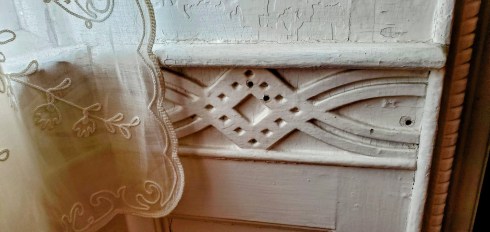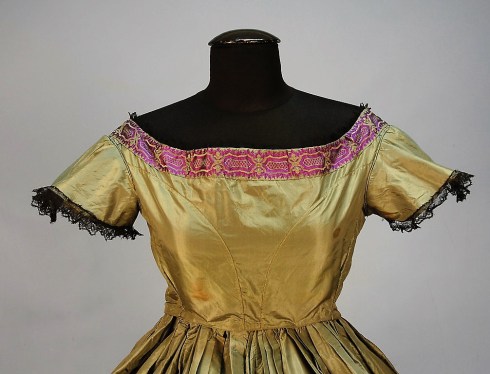I’m giving a talk at the end of the month on the impact of the Reformation on the theology of death and practice of mourning, on both sides of the Atlantic in the seventeenth and eighteenth centuries. I’ve got the former down, but I’m a bit confused by the latter, and particularly by the rise of large, elaborate funerals from the later seventeenth century. Puritans in both old and New England modeled their mourning on the Calvinist disdain for the Catholic culture of death, with its emphasis on transcendent saints, purgatory, prayers, rituals, and material remembrance. As there was nothing that the living could do to facilitate the passage of the deceased into heaven, funerals should be short and simple, and excessive monuments could easily trespass into the territory of idolatry. That’s the ideal, but was it the reality? The most straightforward directive for funerals, the Directory of Publick Worship (1647) of the Westminster Assembly charged with reforming the Church in the midst of the English Revolution, asserted that because the custom of kneeling down, and praying by or towards the dead corpse, and other such usages, in the place where it lies before it be carried to burial, are superstitious; and for that praying, reading, and singing, both in going to and at the grave, have been grossly abused, are no way beneficial to the dead, and have proved many ways hurtful to the living; therefore let all such things be laid aside on the one hand, and on the other that the Christian friends, which accompany the dead body to the place appointed for publick burial, do apply themselves to meditations and conferences suitable to the occasion and that the minister, as upon other occasions, so at this time, if he be present, may put them in remembrance of their duty. Meditations? I get that, but conferences could clearly be held in the pub after the burial. The Directory’s final say on funerals, that this shall not extend to deny any civil respects or deferences at the burial, suitable to the rank and condition of the party deceased, while he was living relays what happened: as the religious significance of the funeral was lessened, their social roles increased, as an expression of the deceased (and their families) status in society. Monument comes to mean something a little more…..mobile.

Every little detail of the funeral of Robert Devereux, the 3rd Earl of Essex and first General and Commander of the Parliamentarian Army, is included in this 1646 broadside.
Essentially what happened is that funerals became more for the living than for the dead. Perhaps they always were, to some extent, but the Reformation extended that extent considerably. Over the course of the seventeenth century, we can see this consequence in print, in broadsides publishing funeral sermons and elegies, as well as the new funeral custom: the issuing of funeral “tickets”.



A Selection of Funeral Tickets from the British Museum.
Across the pond in British America, there weren’t many funeral tickets, but there were lots of printed elegies, and lots of gifts dispersed to the (presumably invited) mourners by the family of the deceased: the traditional ring, the occasional “scarf”, and gloves, so many gloves. The custom of gifting the minister and pallbearers with white gloves seems to have been extended to include everyone who attended the funerals of former members of wealthy New England families in the first half of the eighteenth century: the family of Andrew Faneuil dispensed 4000 pairs of gloves to mourners in 1738! This custom was burdensome to many families, obviously, and the Massachusetts General Court passed “An Act to Retrench the Extraordinary Expence in Funerals” in 1742, ordering that “no scarves, gloves (except six pair to the Bearers, and one pair to each Minister of the Church or Congregation where any deceased person belongs), wine, rum, rings shall be allowed at any Funeral, upon the Penalty of Fifty Pounds,” an extravagant fine for extravagant funerals! As you can see below, Charles Apthorp’s Boston funeral reverted to past practice in 1758 after the act ran out, as his family distributed 95 pairs of gloves to attendant mourners. The attempts of local and provincial governments to regulate “excessive mourning” in the eighteenth century illustrate another consequence of the Reformation: the so-called “secularization of the parish”: it was the state, or the assembly, or the town, which regulated funeral practices, not the Church. In his multi-volume History of Salem, Massachusetts (1924), Sidney Perley reports that in 1697, the town’s selectmen established rules about both the ringing of bells and the order of processions for funerals: ministers had no say.



 Major Thomas Leonard’s funeral elegy, Library of Congress; a mourning ring for Edward Kitchen of Salem, Yale University Art Gallery; Announcement of the 1742 Act; Charles Apthorp portrait by Robert Feke (Cleveland Museum of Art) and a list of the 95 gloves dispensed by his family on the occasion of his 1737 funeral, King’s Chapel.
Major Thomas Leonard’s funeral elegy, Library of Congress; a mourning ring for Edward Kitchen of Salem, Yale University Art Gallery; Announcement of the 1742 Act; Charles Apthorp portrait by Robert Feke (Cleveland Museum of Art) and a list of the 95 gloves dispensed by his family on the occasion of his 1737 funeral, King’s Chapel.
I had no idea that “excessive mourning” was such a conspicuous issue in colonial British America, so was particularly surprised to see the First Continental Congress address it by including elaborate funerals with other forms of “expensive” diversions” which were prohibited: just a black ribbon or crepe armband or necklace, and no funeral gifts of scarfs and gloves. After the Revolution, elaborate funerals must have returned, and so did the penalty system: the selectmen of Boston and Salem issued very detailed and stern warnings against excessive funeral gifts and dress in 1788 in an attempt to encourage an “economical plan of mourning.” By this time, I think the era of elaborate funerals was coming to an end, only to be revived and extended by the Victorians, of course. When Mary Ball Washington died in the following year, newspapers across the new country lauded the first President’s restrained mourning for his mother, as “the heart that mourns need no external sign to speak the agony that preys within.”


The size and customs of funerals are just one avenue into this big topic, but I’m wondering if these showy funerals represent the triumph of a a transatlantic Anglicanism over Puritanism, among other themes and trends. On a more material level, I’m also wondering if coffins became more common in North America, land of a million forests, than still-shrouding Britain in this period! Fortunately I’m giving this talk with my colleague Tad Baker, an expert on colonial material culture (as well as the Witch Trials and myriad other topics), so he can speak to the issue and other details of the built landscape of the Old Burying Point on Charter Street in Salem, the sponsor of our event. I’ve got some things to say about early modern European cemeteries, but he has a lot more expertise in this realm.
Here’s the link to our talk, “The Protestant and Puritan Way of Death,” for the Charter Street Welcome Center: https://www.facebook.com/events/1275084503014361/
And here are some great resources—I’ve got to continue brushing up on this topic myself so I welcome more suggestions!
Craig M. Koslofsky, The Reformation of the Dead: Death and Ritual in early modern Germany, 1450-1700.
Thomas W. Laqueur, The Work of the Dead. A Cultural History of Mortal Remains.
Peter Marshall,
Steven C. Bullock, “Often Concerned in Funerals:” Ritual, Material Culture, and the Large Funeral in the Age of Samuel Sewall” New Views of New England: Studies in Material and Visual Culture, 1680-1830, eds. Martha J. McNamara and Georgia Barnhill (2012: available here).
Steven C. Bullock and Sheila McIntyre, “The Handsome Tokens of a Funeral: Glove-Giving and the Large Funeral in Eighteenth-Century New England,” William and Mary Quarterly 69 (April 2012).
Like this:
Like Loading...






















 Major Thomas Leonard’s funeral elegy, Library of Congress; a mourning ring for Edward Kitchen of Salem, Yale University Art Gallery; Announcement of the 1742 Act; Charles Apthorp portrait by Robert Feke (Cleveland Museum of Art) and a list of the 95 gloves dispensed by his family on the occasion of his 1737 funeral,
Major Thomas Leonard’s funeral elegy, Library of Congress; a mourning ring for Edward Kitchen of Salem, Yale University Art Gallery; Announcement of the 1742 Act; Charles Apthorp portrait by Robert Feke (Cleveland Museum of Art) and a list of the 95 gloves dispensed by his family on the occasion of his 1737 funeral, 











































 Scenes from the exhibition: our host and guide Doreen Wade, reproduction dress for Negro Election Day royalty & the jelly bean test for voting from the 1960s, the Brick Hearth Room, very much the center of the Remonds’ activity in the Hall.
Scenes from the exhibition: our host and guide Doreen Wade, reproduction dress for Negro Election Day royalty & the jelly bean test for voting from the 1960s, the Brick Hearth Room, very much the center of the Remonds’ activity in the Hall.
 A minstrel show at Salem Willows—the exhibit caption says 1885 but it looks quite a bit later than that?
A minstrel show at Salem Willows—the exhibit caption says 1885 but it looks quite a bit later than that?

 Mrs. Nancy Remond was known for her Election Day cakes, which she offered not only during election week (last week of May) but all year long, Salem Gazette; John Remond’s grave stone in Harmony Grove Cemetery; more information about Salem United and the Black Picnic in Salem Willows is
Mrs. Nancy Remond was known for her Election Day cakes, which she offered not only during election week (last week of May) but all year long, Salem Gazette; John Remond’s grave stone in Harmony Grove Cemetery; more information about Salem United and the Black Picnic in Salem Willows is 



 Pioneer Village today and in its heyday, in the 1930s and 1940s, Historic New England and Digital Commonwealth photographs.
Pioneer Village today and in its heyday, in the 1930s and 1940s, Historic New England and Digital Commonwealth photographs.























































